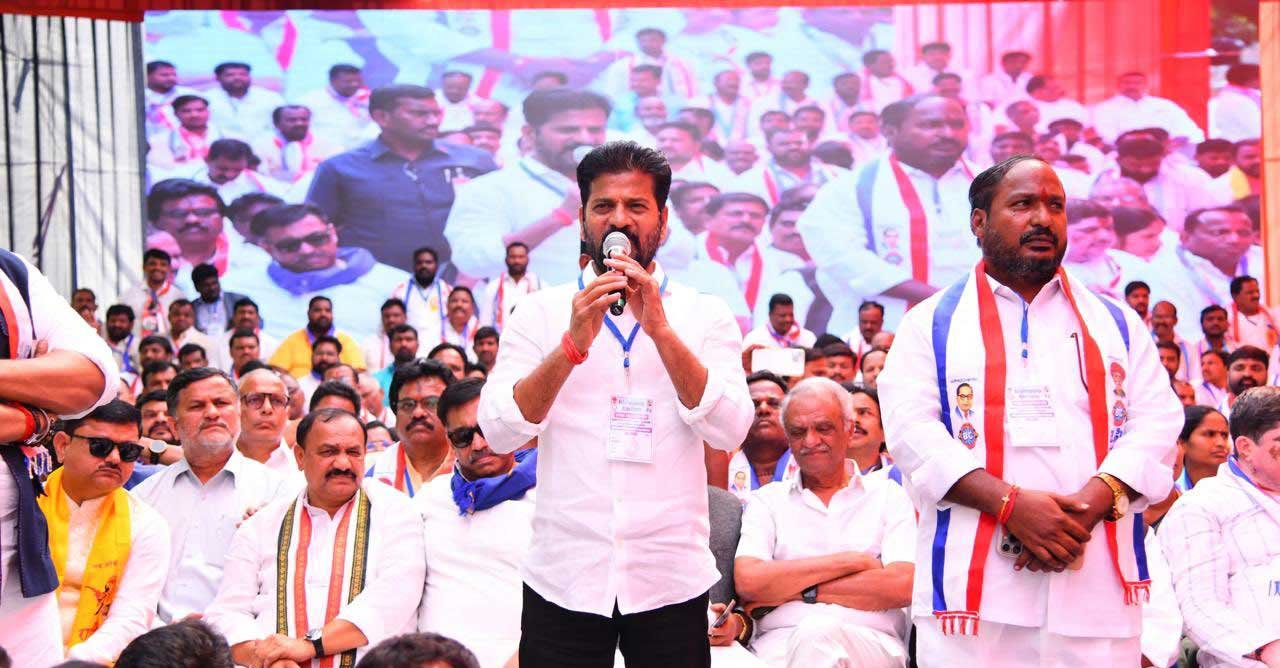- Telangana Vision 2047
- BC-SC Reorganisation

Shri A. Revanth Reddy
Chief Minister of Telangana
Reimagining social justice
On April 14, 2025, commemorating Ambedkar Jayanti, Telangana marked a turning point in its social justice landscape by enacting the Scheduled Castes (Rationalisation of Reservations) Act, 2025, introducing sub-categorisation within the 15% SC reservation quota. Simultaneously, the State extended this approach to Backward Classes (BCs) by initiating a similar tiered reservation system among BC sub-groups.
While paying homage to Dr. B.R. Ambedkar through traditional processions and speeches, the State chose Legislative action as its real tribute. Aiming to ensure that the most deprived castes within these large, heterogeneous categories are no longer left behind, the Chief Minister Shri A. Revanth Reddy ensured the enactment of the Scheduled Castes Act.
Inequality within reserved groups
The concept of sub-categorisation responds to a persistent problem:
not all SCs or BCs have equally benefitted from decades of affirmative action.
- For decades, certain dominant sub-groups within SC and BC communities enjoyed a lion’s share of reservation benefits in education, jobs and political representation.
- Meanwhile, smaller, more marginalised castes have remained on the fringes and were unable to access the opportunities meant for them.
A game-changing legal backing
Though long debated, the idea of correcting this imbalance has remained politically sensitive until now. A game-changing moment arrived in August 2024, when a seven-judge Supreme Court Bench — led by Chief Justice D.Y. Chandrachud — ruled that States could create sub-quotas within SC and ST categories. Telangana wasted no time in acting on this historic judgment.
Evidence-based reforms: The SC sub-quota structure
The State had proactively appointed a commission, led by retired Justice Shameem Akther, to examine disparities among 59 SC sub-castes. Based on the commission’s findings, Telangana restructured the SC quota as follows:
- Group I (most backward) – 1%
- Group II (marginal beneficiaries) – 9%
- Group III (relatively better-off) – 5%
Salient features of new structure
- Retaining overall 15% SC quota
- Making it more equitable and just
- Similar rationalisation process for BC quota underway
- Working to restructure internal allocations among the BC sub-castes
- Basing allocation on updated data and socio-economic surveys
- Policy shift to apply to all future job recruitment and educational admissions
Beyond numbers: A shift in justice
Telangana has taken a bold step that could influence the national discourse. Together, these measures represent more than bureaucratic reshuffling. They reflect a deeper shift in how the State defines fairness, recognise that inequality exists even within reserved categories, and believe that true justice must reach those furthest behind.
A model for the nation
With the 2026 Census on the horizon and rising calls for caste-based data and quota expansion, Telangana’s sub-categorisation of SCs and BCs could serve as a model for other States grappling with similar internal disparities. For the most disadvantaged groups, this reform isn't about numbers — it’s about delivering long-overdue recognition and about finally being seen.
